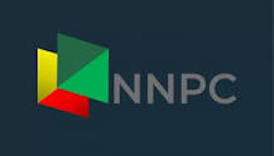InfoTech
Executive Order 5 as Path to Economic Growth

By Sylvester Thompson
President Muhammadu Buhari in February 2018 signed the Executive Order No.5. The Order was meant to set Nigeria on the path of viable and sustainable economic growth and rapid transformation, using the instruments of Science, Technology and Innovation (STI).
The Order was also meant to boost planning and execution of projects, promotion of Nigerian content in contracts, science, engineering and technology for Nigerians both at home and in the diaspora.
Dr Ogbonnaya Onu, the immediate past Minister of Science, Technology and Innovation, said that the Order was the initiative of President Buhari’s administration to boost the economy via STI.
The former minister spoke recently in Abuja, at a sensitisation workshop on the Presidential Executive Order No.5.
The workshop featured the launch of Complaints and Appeal Procedure of the Presidential Order No.5.
Onu clarified that the Order was revolutionary, aimed at mandating procuring entities to give preference to Nigerian companies and firms in the award of contracts in line with the Public Procurement Act of 2007.
He stressed that the Executive Order also involved the engagement of Nigerian professionals in areas where their requisite expertise were available, among others.
“I am happy that already the effect of the Executive Order is being felt in the country, the University of Transportation, Daura, is one of the products of the Executive Order.
“Also, as a result of the Executive Order, it became necessary to organise both the first and second Strategy Competitiveness Workshop for various regulatory bodies in the country.
“This helped to strengthen the operations of the Small and Medium Enterprises (SMEs) for the good of the country,” Onu said.
Experts and stakeholders in the STI are optimistic that if the Executive Order No.5 is fully implemented, it would fast track the country’s industralisation and development.
An article on: “The Implications of the Presidential Executive Order No 5,” published by George Etomi and Partners, commended the Federal Government for initiating the Executive Order.
The authors wrote: “This is a policy in the right direction and has laid a proper foundation for an industrial, diversified and self-sustaining economy.’’
They noted that it was a step towards a sustainable path and to a future in which wholesale importation and consumption of foreign technology would be reduced.
They expressed optimism that the implementation of the Order was bound to impact positively on the economy of Nigeria, which also includes promoting the application of local content in STI.
Etomi and Partners said other positive impacts were that the Order would encourage indigenous experts in diaspora to return to Nigeria for public procurement purposes which would lead to improved standards and healthy competition.
They reasoned that preference would be given to Nigerian companies and firms by procuring authorities in the award of contracts.
“Immigration agencies may create a special immigration class for experts in African countries to work and reside in Nigeria so as to share their knowledge with Nigerian experts, which would aid the capacity of the companies and foster inter-Africa relations.”
They also held that there would be increased production of local materials for building and construction.
Mr Ibiam Ogbuejiofo, the National Coordinator, Strategy Implementation Task Office for Presidential Executive Order 5(SITOPEO-5) at the Federal Ministry of Science, Technology and Innovation, said no civilian president in Nigeria issued an Executive Order before now.
He stressed that an Executive Order should not be confused with Presidential Proclamation or Memorandum or even Federal Government circulars, signed by the Secretary to the Government of the Federation (SFG).
According to him, the fundamental difference between the Executive Orders and the Federal Government service-wide circulars is that the circulars do not derive from Section5(1) of the powers of the President in the 1999 Constitution as amended.
He clarified that circulars are signed by the SGF and not the President, and that Presidential Memoranda was essentially an Executive Order.
“The difference is that an Executive Memorandum does not have an established process for how the President issues it.
“It may also not be required by law to be published although publication to the general public is necessary in order to have general applicability and legal effect,” he said.
Ogbuejiofo explained that with an Executive Order, the President instructs how to work within the parameters of the laws already set by the National Assembly, allowing him to push through policy changes without going through the National Assembly.
On the functionality of the Order, the SITOPEO-5 National Coordinator said the Executive Order remediation was aimed at the rapid movement of Nigeria to the fourth generation industrial development.
He believes it will improve Nigeria’s productivity and global competitiveness ranking, create enabling environment to mobilise local investment in `Made in Nigeria’ goods and services as well as attract foreign investments.
He said the Order was important for economic empowerment of Nigerian professionals, manufacturers and the youths among others.
Ogbuejiofo stressed that the Federal Government recognised that entrenching STI in everyday life is the key to achieving the nation’s development goals across all sectors of the economy.
“The full implementation of the Executive Order 5 will no doubt boost the realisation of Mr President’s promise to move 100 million Nigerians out of poverty in the next 10 years,” Ogbuejiofo said.
Sylvester Thompson is of the News Agency of Nigeria (NAN)
InfoTech
Cloud Security and its Role in Healthcare Cybersecurity

By Engineer Olusola Omotunde
The advent of cloud technology can be traced back to the 1960s according to https://www.cloudzero.com/blog/history-of-the-cloud/.
Cloud technology has evolved from a myth to a revolution in the global space.
In fact, it forms one of the best ways to secure data and save organizational funds.
A drift from the era of physical data centers has become the norm.
Cloud platforms like Amazon and Azure have taken over the scene even in developing climes. How much space does an organization need for its operations and what is the cost effect?Another pertinent point would be, the security of organizational data.
In this paper, we will provide a synopsis of cloud security and its role in healthcare cybersecurity.
The healthcare industry is one of the most critical aspects of any nation. How safe are patient’s data? What are the mitigating factors? How regularly does the IT team carry out an assessment of the security in place? In all of these, cloud security comes into play.
Cloud security is critical in healthcare cybersecurity because it provides the tools, processes, and policies required to protect sensitive patient data and assure regulatory compliance in an increasingly digital environment. Healthcare organizations that use cloud services for electronic health records (EHRs), telemedicine, patient portals, and other services face specific cybersecurity challenges, such as protecting huge amounts of personally identifiable information (PII) and protected health information (PHI).
Below are some aspects where cloud security contributes or plays pivotal roles in healthcare cybersecurity:
1. Data Protection
• Data Backup and Recovery: Cloud solutions provide backup and disaster recovery capabilities, which assist healthcare organizations in protecting data from loss due to cyberattacks or system failures.
• Encryption: Cloud providers provide sophisticated encryption options for data at rest and in transit. This is critical for healthcare providers to safeguard sensitive patient information from unauthorized access.
2. Prevention and Detection of Threat
• Real-time Monitoring and Alerts: Cloud security solutions can provide 24-hour monitoring and notifications if suspicious behaviour is discovered. This quick response capability is crucial for healthcare organizations to avoid or mitigate the effects of cyber events.
• Advanced Threat Protection: Cloud providers provide services that include threat detection features like intrusion detection, malware scanning, and vulnerability assessments. These services assist healthcare organizations in identifying and addressing hazards before they cause harm.
• Automated Patch Management: Cloud providers frequently handle patch management for their infrastructure, ensuring that systems are up to date against the most recent vulnerabilities, which can dramatically minimize the risk of attack.
3. Flexibility and Scalability
• Scalable Security: As healthcare organizations expand, cloud security can scale with them, allowing for the installation of additional security measures without requiring major infrastructure upgrades.
• Adaptable Infrastructure: Healthcare organizations can quickly respond to emerging threats with cloud-based solutions that include updated security tools and services. This adaptability is critical in a dynamic threat context.
4. Cost Efficiency
• Pay-as-you-go Model: Many cloud services use a pay-as-you-go model, which allows healthcare providers to only pay for the security services they use. This can help organizations manage costs while still providing high-quality security tools.
• Reduced IT Costs: Cloud providers manage and maintain the infrastructure, eliminating the need for healthcare companies to invest heavily in on-premises security hardware and personnel.
5. Regulatory Compliance
• HIPAA and GDPR Compliance: Cloud providers that service healthcare organizations frequently offer solutions designed to comply with industry-specific standards such as the Health Insurance Portability and Accountability Act (HIPAA) in the United States and the General Data Protection Regulation (GDPR) in Europe.
• Audit Support: Many cloud services provide logging and monitoring capabilities to assist healthcare organizations in tracking and auditing data access and usage, which is critical for regulatory compliance.
Key Considerations for Healthcare Providers across the globe
When healthcare providers deploy cloud solutions, they must address a number of security concerns to safeguard sensitive patient data, ensure regulatory compliance, and manage possible risks. It is also important that they scrutinize the security certificates held by cloud providers, ensure that they clarify ownership rights to their data with their cloud providers, training staff on the security best practices which include training on data handling, phishing awareness and secure access protocol.
There is no one-size fits all rule other than being careful!
Engineer Olusola Omotunde is an IT expert and writes from Lagos, Nigeria
InfoTech
The World Today, Data Ethics and Privacy

By Emmanuel Oye-Adeniran
Data is becoming a vital resource in the digital age, propelling innovation and decision-making in many sectors of the economy such as Construction, Healthcare, Agriculture and Finance. However, data ethics and privacy worries have increased along with data gathering, storage, and analysis growth.
Discussions concerning the ethical use of data and the defence of individual rights in a society that is becoming more interconnected revolve around these issues. This article looks at the importance of data privacy and ethics as it affects today’s world.Many years ago, before the advent of digitalization, it was of no consequence to share an individual’s information with or without consent which made it quite interesting as there were no laws safeguarding individual’s data, in fact, people did not bother much.
However, in the new era of digitalization, a person’s data must be treated as private.
They have entrusted you with their bank details, contact addresses, etc and they must be kept private.
Cybercrime has become so prevalent globally that many have argued it has come to stay. Well, this might not be untrue considering how long it has become an issue on the front burner.
A synopsis of data privacy between the 16 and 19th centuries reveals that privacy was mostly a problem with physical areas and communications. The necessity of maintaining communication secrecy was brought to light by the development of the postal system in the seventeenth century (Ref: Mark Elliot, Anna M. Mandalari, Miranda Mourby, Kieron O’Hara).
In today’s age of online shopping, social media interactions and AI technology, it has become evident that various platforms usually collect people’s data for various purposes, ranging from marketing intelligence to improved user experience.
A look at some of the elements which are related to Data privacy and ethics in today’s world:
(i)Transparency and Accountability:
Stakeholders are holding digital businesses more and more responsible for their ethical behaviour and data policies. Gaining the trust of users requires being open and honest about the goals, techniques, and possible risks associated with data collecting. Businesses should make their policies on the gathering, handling, and distribution of personal data easily understandable.
User permission and data control procedures should also be simple to understand and intuitive. Accountability techniques, such recurring audits and impartial supervision, can guarantee that businesses follow legal and ethical criteria.
(ii) Bias and Fairness:
The computer is obviously not intelligent without human input, and so it must be fed with the right unbiased information. If the Algorithm is discriminatory towards a social class for instance, then this nullifies the essence of Data ethics.
Algorithmic bias poses a significant ethical challenge in technology use. Machine learning algorithms, while powerful, can perpetuate and amplify biases present in training data. This can result in discriminatory outcomes, reinforcing existing social inequalities.
Ethical technology use requires ongoing efforts to identify and mitigate bias in algorithms. Companies must prioritize fairness and equity in designing and implementing AI systems, ensuring that technology serves diverse populations without perpetuating discrimination.
(iii)Consent and its role:
The use of ambiguous policies often makes it almost impossible for users to make very safe and informed choices about the implications of sharing their data and so it is imperative that policies be made simpler for users to understand. This would by a long shot, provide a proper decision-making process.
(iv)Empowering users:
Enabling consumers to take control of their data is essential to using technology ethically. It is critical to give people easily available tools for controlling privacy settings, comprehending data usage, and making defensible judgments about disclosing personal information. Initiatives aimed at raising user knowledge and education can support people in advocating for their right to privacy and navigating the digital world. By enabling people to take charge of their digital identities, businesses can cultivate a climate that values data security and online privacy. People must be given more rights to their data.
Conclusion
In today’s ever-evolving world of digitalization, it is imperative that stakeholders especially corporations adhere to the rules of data ethics and privacy.
Every clime must ensure that their users are protected by establishing laws and reviewing such existing laws to protect their users. Some of the data protection and ethics laws like the Pan-African initiatives of 2014, the Nigeria Data Protection Regulation (NDPR) issued in 2019 and the European GDPR which came into effect on the 25th of May, 2018 are some of the efforts by various governments across the globe to stem the abuse of peoples’ rights to their Data. The laws are quite clear and focus on some salient points such as, Increased accountability & transparency, Empowerment of individuals, Standardization across the EU and Encouragement of best practices. These laws must be adhered to.
Big world corporations must put the customer’s rights at the front burner.
InfoTech
Network Engineering in the AI world

By Engineer Seun Omotoso
Introduction
AI developments are driving a change in network engineering. Historically, network engineers were responsible for building, deploying, and managing physical and virtual network infrastructures to ensure flawless connectivity and data flow.
However, incorporating AI into network engineering is transforming how networks are maintained, optimized, and secured. This article examines the importance of network engineering in the AI field, focusing on significant advancements, applications, and future prospects.The Intersection of AI and Network Engineering
Enhanced Network Security
(i) Threat Detection and Response: AI-powered security systems can recognize and respond to threats in real-time.
(ii) Adaptive Security Policies: AI can generate and update security policies in response to developing threats. This adaptive strategy ensures that the network is constantly safeguarded against the most recent security threats.
(iii) Incident Response Automation: AI systems can automate incident response tasks such as isolating affected network segments, blocking malicious traffic, and initiating recovery protocols.
AI-Driven Network Management
(i) Automation: Artificial intelligence enables the automation of common network management tasks such as configuration, monitoring, and troubleshooting. AI-powered systems can detect problems, apply solutions, and optimize network performance without requiring human intervention.
(ii) Predictive Maintenance: Machine learning algorithms can analyze previous network data to identify possible failures and performance degradation, allowing for proactive maintenance and reduced downtime.
(iii) Self-Optimizing Networks: Artificial intelligence (AI) can dynamically alter network parameters to optimize traffic flow, bandwidth utilization, and resource allocation in real-time.
Network Analytics and Insights
Performance Monitoring: By examining enormous volumes of data, AI technologies offer profound insights into network performance. These understandings aid in the detection of bottlenecks, the comprehension of user behaviour, and the enhancement of network efficiency in general.
AI can predict patterns in network consumption and assist with capacity planning, which ensures that network resources are scaled in accordance with demand.
User Experience Optimisation: Artificial intelligence (AI) can recommend ways to improve user experience, like cutting down on latency and raising service quality, by examining user interactions and network performance
Key Technologies for AI-Driven Network Engineering
Machine and Deep Learning
Machine learning algorithms are at the heart of AI-powered network management, allowing systems to learn from past data and make sound judgements.
Deep learning, which can handle complicated and high-dimensional data, is utilized in increasingly advanced applications such as picture and voice recognition in network security.
Natural Language Processing (NLP)
Natural Language Processing (NLP) enables network engineers to engage with AI systems through natural language commands. This makes network management more understandable and accessible.
Internet of Things (IoT) Integration
AI assists in managing the enormous number of IoT devices connected to current networks. It provides seamless connectivity, efficient data routing, and security for IoT ecosystems.
Some key challenges
Skill set development- Network engineers especially in developing climes, must learn new machine learning and artificial intelligence techniques. It takes ongoing education and training to stay up to date with technical developments.
Scalability-Scalable AI solutions are necessary to manage the expanding scale and complexity of contemporary networks. Effective algorithms and substantial processing power are needed for this.
Inter-operability- AI integration with the current network architecture can be difficult. For operations to run smoothly, new AI-driven technologies and legacy systems must be compatible.
Data privacy and security- It is crucial to protect the security and privacy of data used by AI systems. To stop breaches and misuse, network engineers need to put strong data protection mechanisms in place.
In summary
The field is changing as a result of AI’s incorporation into network engineering, which offers previously unheard-of levels of automation, security, and efficiency. AI’s place in network engineering will only rise as the complexity of networks and the need for seamless connectivity increase. In order to keep ahead in this quickly changing sector, network engineers must embrace these improvements, updating their skills on a regular basis and embracing new technology. Artificial Intelligence-powered intelligent, adaptive, and resilient networks are the wave of the future for network engineering.
Engr. Seun Omotoso is the Managing Director of Techwise Consulting and he writes from Ibadan, Nigeria.






















